Things to Know About Bolu
Bolu has a rich history, dating back to the Hittite period (2000 BC-500 BC) and was later an important city in the Kingdom of Bithynia (279 BC-79 BC), inhabited by various tribes such as Bebryces, Mariandynes, Koukones, Thyns and Paphlagons.
During the Roman era, Bolu was known as Claudiopolis in honor of Emperor Claudius, and later, the name of the posthumously deified lover of the Roman Emperor Hadrian, Antinous, was added to the city’s coins. Emperor Theodosius II (408-450) made Bolu the capital of a new province called Honorias, named after his son.
Bolu was under Byzantine control and named Hadrianopolis, loyal to the Byzantines, until it was recaptured by nomadic Turks in 1097 and renamed Boli. In 1197, it was conquered by the invading forces of the Seljuk Sultanate, and in 1325, it was conquered by the Ottoman Empire.
Today, Bolu is a city with about 65% forest coverage, making it a haven for trees, clean air, and natural landscapes. It boasts natural beauties such as Abant, Gölcük, Mudurnu Sülüklü Lake, Kıbrıscık Karagöl and Aladağ Beşpınarlar, which are sure to enchant nature lovers. Bolu’s traditional cuisine, which has been kept alive by renowned chefs from Bolu province, such as Mengen, is also noteworthy and has gained a reputation for its unique and delicious flavors.
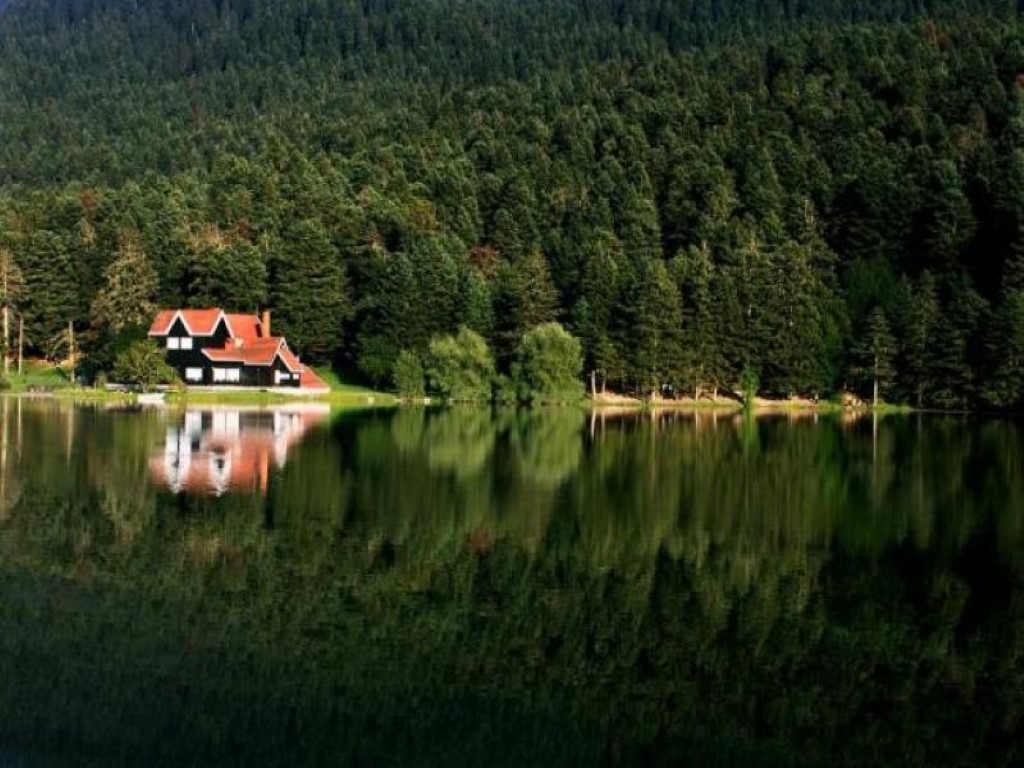
Places to Visit in Bolu
The Yedigoller (Seven Lakes) National Park
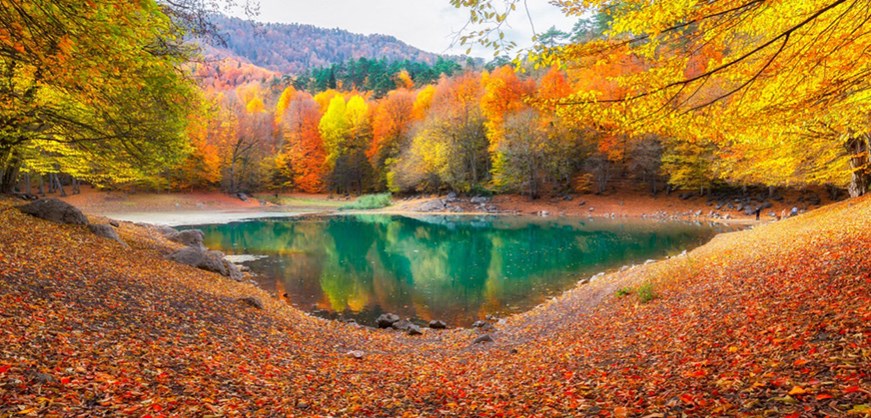
Yedigoller National Park is a picturesque oasis located 42 km north of Bolu and accessible via the Yenicaga road. During winter, the route from Bolu to the national park is closed, and visitors must use the Yenicaga-Mengen route to reach their destination by car.
The park was declared a national park in 1965 and spans 1623 hectares of land. The seven small lakes, including Buyukgol, Deringol, Seringol, Nazligol, Sazligol, Incegol, and Kucukgol, are the main attraction for visitors.
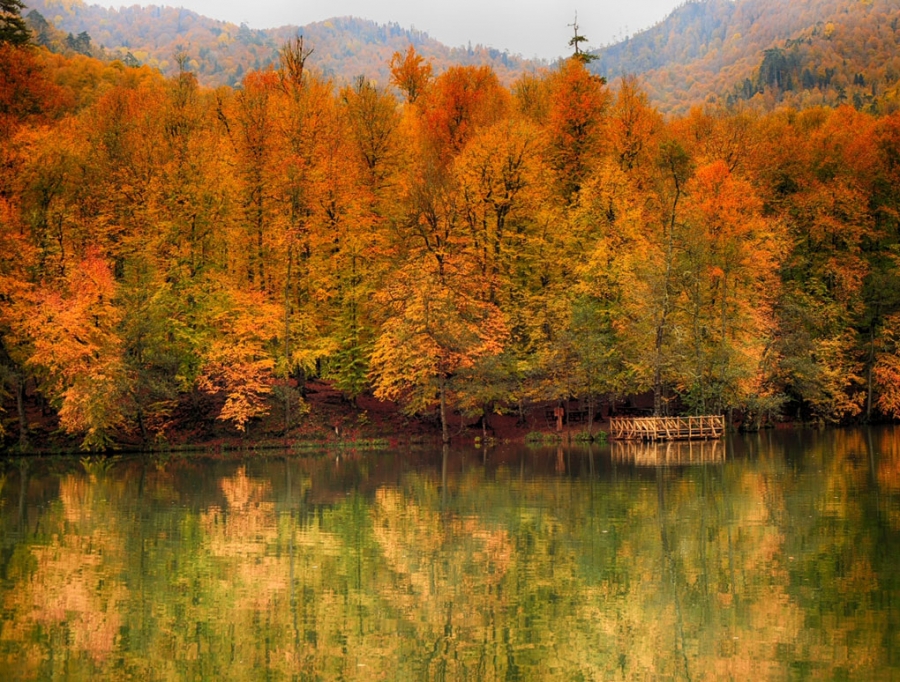
The park is home to numerous species of trees, including redwoods, oaks, and elms, creating a unique environment. Wildlife such as deer, pigs, wolves, and foxes are protected in the park, ensuring their survival. In autumn, brightly colored leaves add to the park’s beauty, while in winter, the snow-covered landscape offers a picturesque sight.
For those seeking a breathtaking experience of wildlife and stunning landscape, Yedigoller National Park is an ideal destination.
The Abant Lake Natural Park
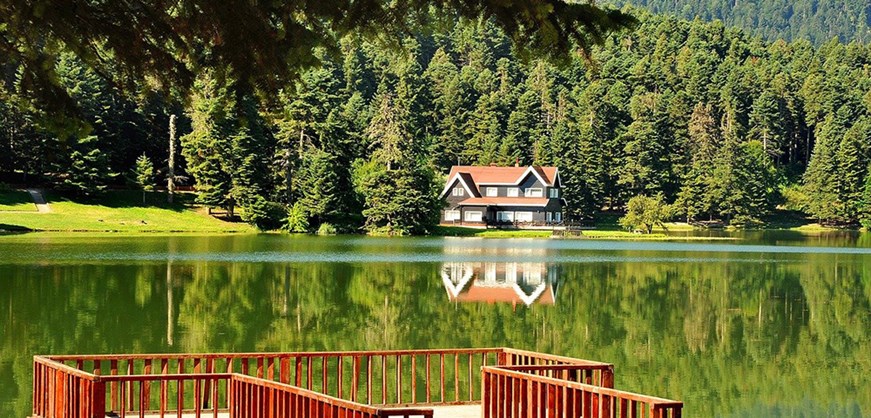
The Abant Lake Natural Park, situated in Bolu Province, is about 65 km from the city center and reachable via a scenic route that passes through picturesque villages, lakes, orchards, and hills. It takes approximately two hours to reach the park from Bolu city center by car.
The Abant Lake is a tectonic structure that provides shelter for various plant species and has excellent potential for outdoor recreation. In recognition of its unique characteristics, 1150 hectares of the lake were designated as a Natural Park in 1988.
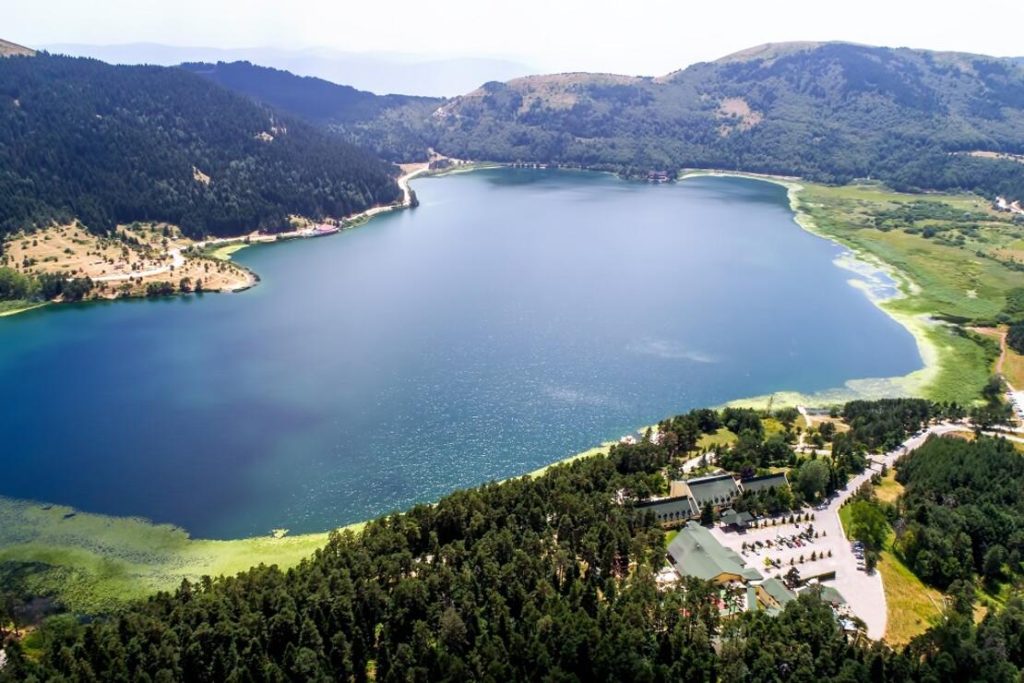
The park boasts a diverse range of flora, including Scotch Pine, beech tree, larch tree, oak tree, poplar tree, ash tree, horn-beam tree, willow tree, juniper tree, forest rose, tamarisk, hazelnut tree, medlar tree, priest hat, azarole, holly, dog-rose, bracken, blackberry, strawberry, mint, raspberry, ivy, nettle, mare’s tail, and various pasture grasses and trees.
The park is home to several key animal species, including pigs, deer, roe deer, bears, foxes, jackals, rabbits, and birds of prey. The endemic species Abantalası is found in the lake, contributing to the park’s unique fauna. The Abant Lake Natural Park is a must-visit destination for those seeking a diverse range of flora and fauna and an opportunity for outdoor recreation.
Golcuk Lake Nature Park
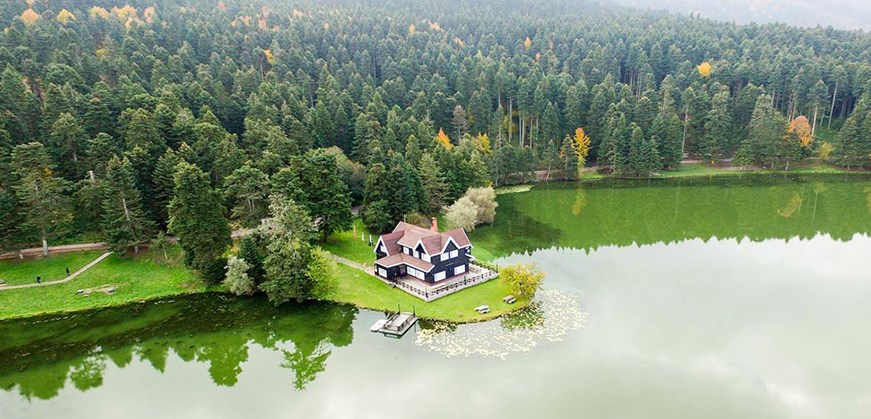
Located 13 km south of Bolu city center, Golcuk Lake is a man-made reservoir situated at an altitude of 1217 meters. The lake covers a large expanse of water with an average depth of 4.5 hectares and a circumference of approximately 1300 meters.
Surrounded by a variety of pine, fir, beech, hornbeam, and mixed tree species, Golcuk Lake is home to the iconic State Guesthouse of the Ministry of Agriculture and Forestry, which has become a symbol of the lake’s charm and appeal.
In addition to the State Guesthouse, the lake offers a restaurant, cafeteria, and bungalow-style accommodations. The Ministry of Agriculture and Forestry has designated the lake and its surroundings as a “Nature Park” and prohibited car access around the small lake.
Visitors can enjoy hiking trails, viewing terraces, and picnic areas, making it an ideal destination for sports and recreational activities. With its exceptional climate, Golcuk Lake is one of Turkey’s most inviting destinations that should not be missed.
Seben Rock Houses
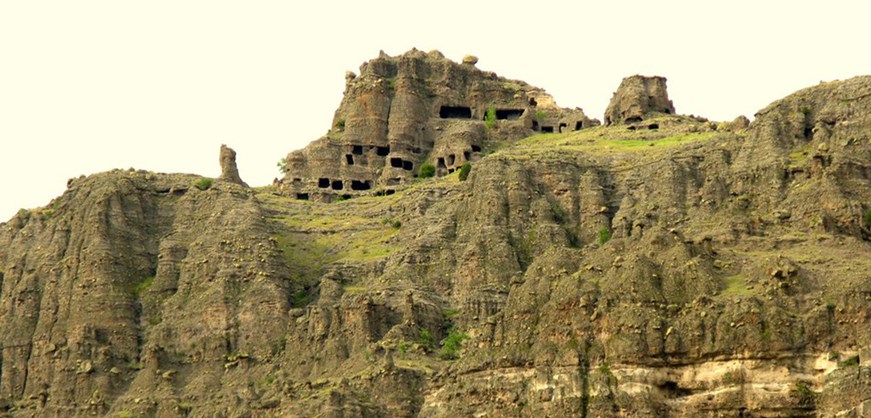
Located in the western part of the Black Sea region, Seben is a small town where lush greenery meets the blue sea. One of the town’s notable attractions is the Seben Rock Houses, an architectural and historical site that draws tourists due to its distinctive architecture and memorable ambiance. The Rock Houses are situated 52 kilometers south of Bolu and are definitely worth a visit to experience their exclusive architecture and rich history.
Solaklar Rock Houses
Solaklar Rock Houses, situated around 4 kilometers away from the center of Seben town, are located approximately 2 kilometers inland and 750 meters from Solaklar village in the northeast. Currently, three levels of rock houses are open to visitors. The ground floor comprises a large carved area that may have served as a shelter for livestock. Visitors can access this level through an iron staircase instead of the road that was created during the settlement period. On the first floor, visitors can explore three rooms. The second room features crosses on both walls, with a Latin inscription on the cross. Additionally, the rooms on this floor have small niches in the walls, and all of them open up to a corridor that has a rock wall overlooking the valley, with window openings on the right.
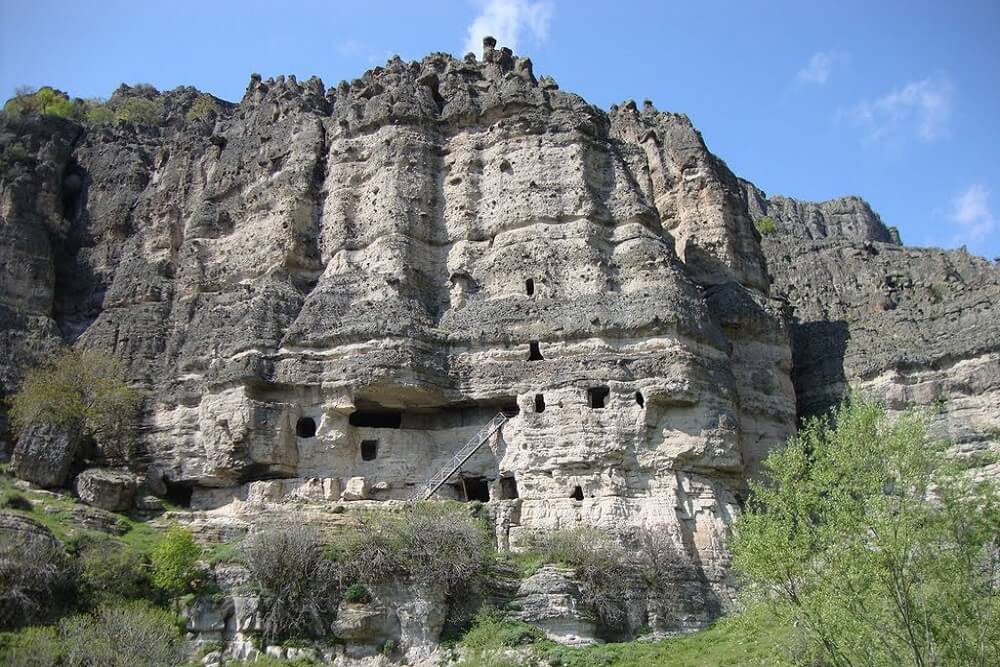
To access the second floor, visitors need to use a vertical chimney. This level consists of a single room, and on the left side of the chimney, there is a well dug into the ground, with a depth of one and a half meters and a diameter.
Access to the third floor is gained by climbing a vertical chimney. This level, which is also a single room, features a cistern built to hold water for agricultural purposes measuring 1.5 x 15 meters, located directly opposite the window that provides a view of the valley. It is believed that the water in this cistern was carried via a canal carved out from the window.
To reach the fourth floor, visitors must climb another vertical chimney. This level, which is mainly for viewing the valley below, has a ceiling height of approximately 120 meters. There is only one corridor window for visitors to look out of, with no other space for them to stand.
Muslar Rock Houses
Located in Ulukayalar, a rocky area 7 kilometers away from Seben Town, the Muslar Rock Houses are believed to be a Christian settlement with a total of five floors. The settlement includes two wells that may have served as cisterns on the hilltop, as well as on the west and lower ground level of the rock settlement.
There are several entrances to the eastern slope of the valley, including natural and man-made ones. Interestingly, some fairy chimneys on both sides of the valley have a similar formation to those in Cappadocia. In 2009, the rock houses were officially registered as a 1st Degree Archaeological and Natural Protected Area.
Akkaya Travertines
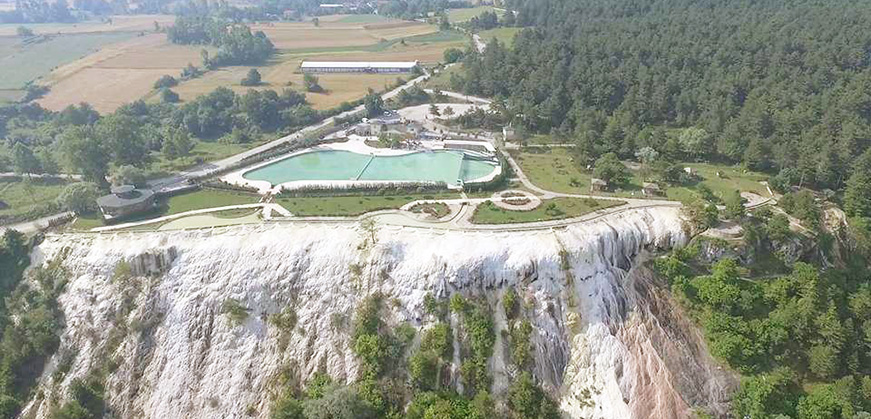
Akkaya Travertines, situated 10 kilometers southwest of Bolu on the Mudurnu road, is often referred to as “Pamukkale of Bolu” due to its breathtaking scenery.
Akkaya Travertines is one of the few remaining natural environments in Bolu and the Western Black Sea Region that has remained untouched. The water in the region is rich in calcium and is about 20 degrees Celsius. When water flows from the terraced surfaces, carbon gas is released, resulting in the volatilization of lime and the formation of limestone deposits.
The highlight of this park is the travertine pools of mineral water, which have a mild taste. Visitors can swim in the natural rock pool or quench their thirst by drinking the refreshing water from the fountain.


